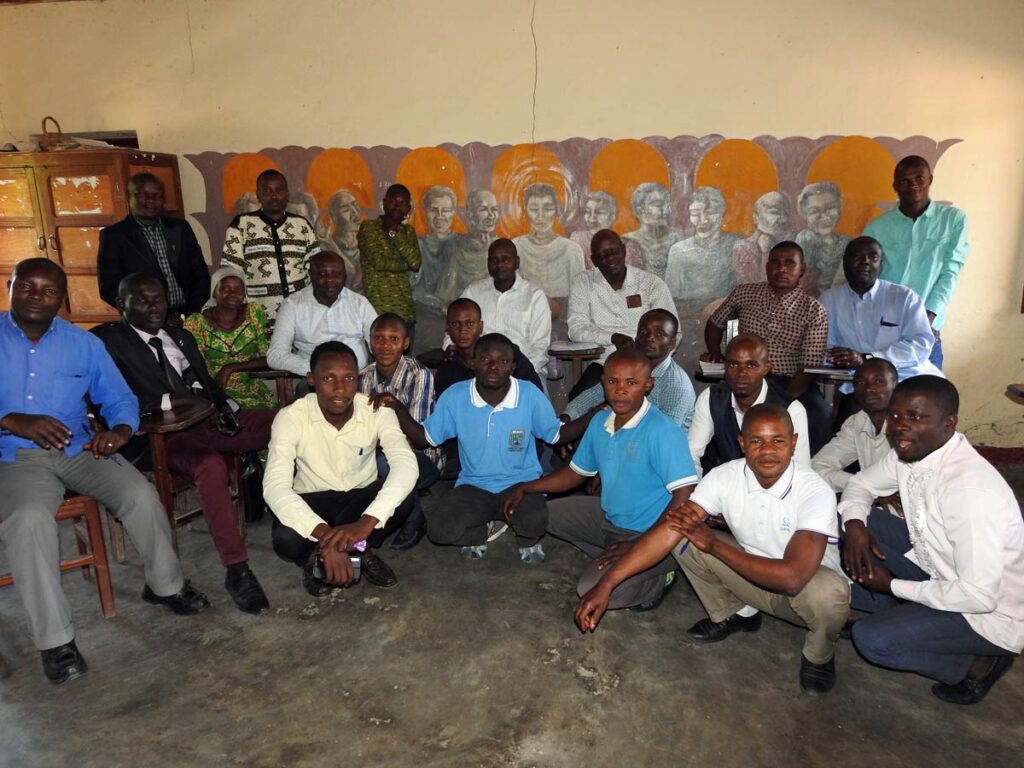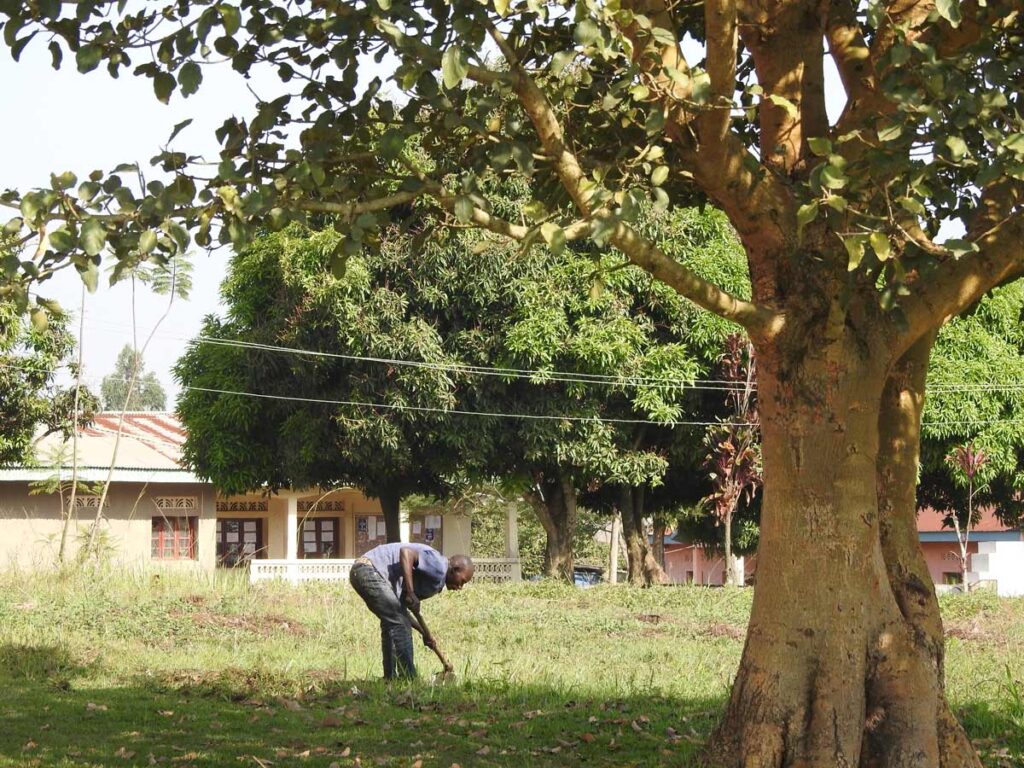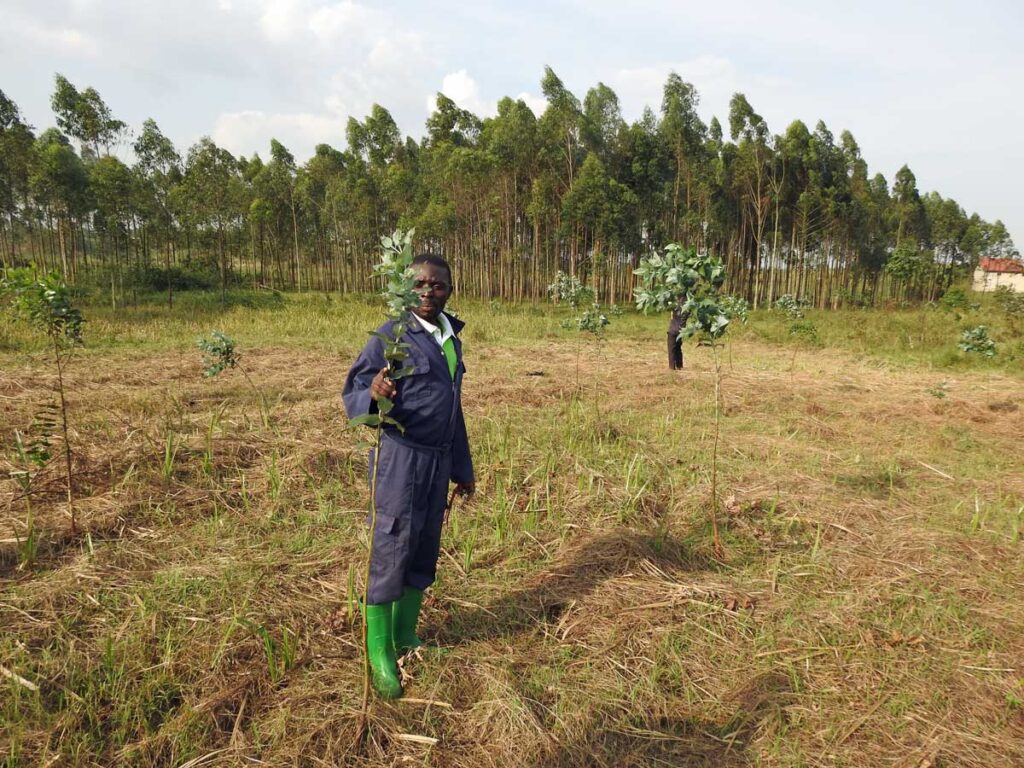Voice of violence, or voice of hope?
Back from DR Congo, mission partner Berdine asks which voices will we listen to – the loud shout of fear or the quieter tones of faith and hope?
Photo: Will we consign African conflict zones to doomscrolling on our phones, or will we pay attention to a different story? (All photos Berdine van den Toren-Lekkerkerker / Church Mission Society)
When you think of eastern Congo, what is the first thing that comes to mind?

I guess it will have something to do with war, violence around tribal differences and natural resources. The latest BBC stories about this region are describing the fight between the M23 rebels and the government army around the city of Goma. But, this is not the whole story of the region. Next to the loud voice of violence and conflict there is a voice of human solidarity, courage, faith and hope.
Critical questions
In February, I had the privilege of visiting the Anglican University of Congo in Bunia again, working with 22 students on intercultural theology and Christian education.
The conversations, shared reflections and critical questions that helped us think through the theological subjects within the context of eastern Congo were fascinating as well as inspiring.

Would it be too much to say that together we discovered more of God’s story in our own lives and in the lives of our communities?
Negative images
During such a visit, several words of welcome and thanks are spoken. The one thing coming back in all these speeches was the fact that I must be very courageous, since all the negative stories about eastern Congo did not keep me away. The former archbishop, the Most Rev Henri Isingoma, said in his speech that if people from Kinshasa find out that you come from Ituri province, from Bunia, they will say “Pole, we are very sorry for you!”

I wonder, how painful must it be to be confronted with such a negative view of your home? Will this affect your own view? Will it be internalised? The many times that this view of Bunia as a place of violence was repeated in the speeches seems to suggest this.
But then, in meeting the people, in eating together, in sharing our joys and questions, our histories and hopes, I have also seen a very different side of eastern Congo.
Glimpses of beauty
I have seen so many people who are just doing what they think needs doing, without much talk about it, but who for me are signs of strength, beauty and God’s goodness.
I see women of the Christian community working in a field to cultivate vegetables in order to support the House of Prayer and the sick people who are living there.
I meet a woman who, next to her three own children, adopted four orphans into her family.
I hear of other families welcoming former child soldiers into their homes in order to nurse them back into a healthier life in society.

I see a young man singing in the choir in church and hear that he has a deeply traumatising past with psychiatric problems as a result. Now he is studying again. The church community had welcomed him and prayed with him for deliverance and currently are supporting his studies financially.
Getting on with life
I am struck by the fact that in my class students coming from warring communities are working together. They are neither hiding this fact nor highlighting it, it just seems to be part of life. They are brothers and sisters in Christ living by grace and enjoying each other’s company.
I enjoyed the shade of the trees that are planted in a reforesting project, as well as the commitment of the students to this project on their campus. I came across a group of boys, so absorbed in a game with bottle tops that they did not even notice me watching their game.
Reality of violence
It is true, the other story also came close to me during these weeks. A bomb was placed in a school building connected to the university. We are grateful for the janitor who realised something was wrong and decided not to open the door that turned out to be booby-trapped. We thank God for the MONUSCO soldiers who were able to safely defuse it, without any destruction.

The last day of my class, the nephew of one of the students was abducted by a group of rebels. As I am writing this, the army is still looking for him. There seems to be no trace of him, and people fear that he is killed. We prayed with three members of staff at the university who have children studying at the university in Goma. They are worried about their safety and about the lack of food coming into the city.
The reality of violence came close. It is a real story that cannot be denied or diminished. But I have heard so many stories of courage, perseverance and acts of reconciliation that I am convinced the story of violence is only one story. And I wonder, which story will have most power?
Which story will we listen to?
I know the voice of violence seems the loudest and most repeated. But could it be that the voice of the other story will have a more long-term impact, and sustain communities in the midst of ruins, be transformative, even though it seems to speak with a softer voice?
Maybe the question should not be which story has most power, but to which story will we give most attention? Which is the story that reflects the whole of reality? And ultimately, which is the story that reflects God’s reality and presence in this place?
Next time I am invited to go to Bunia, I do not want people to focus on my so-called courage, but on the beauty, hope and faith that continues to shape the people and their communities in the midst of a broken world – by the grace of God